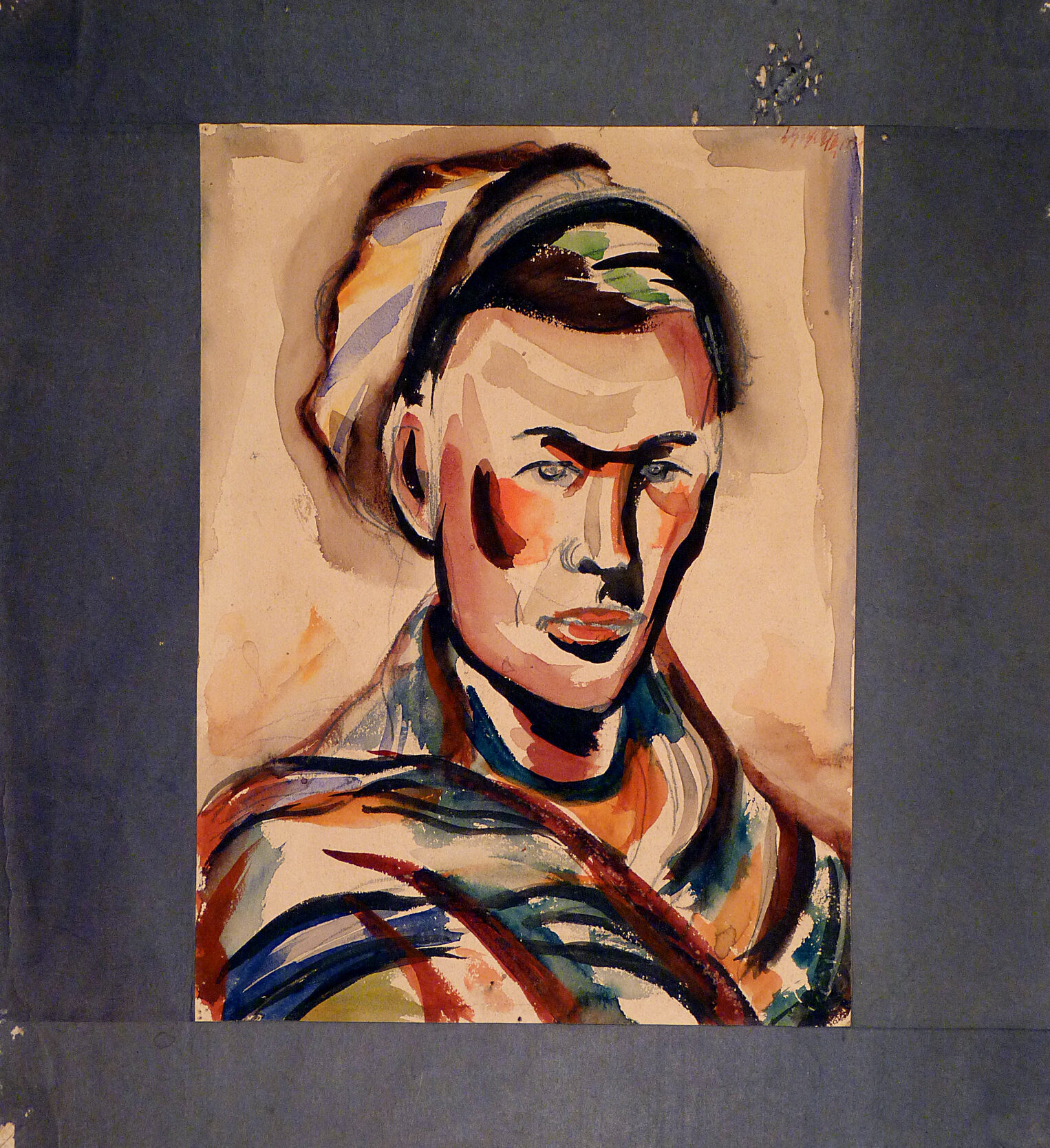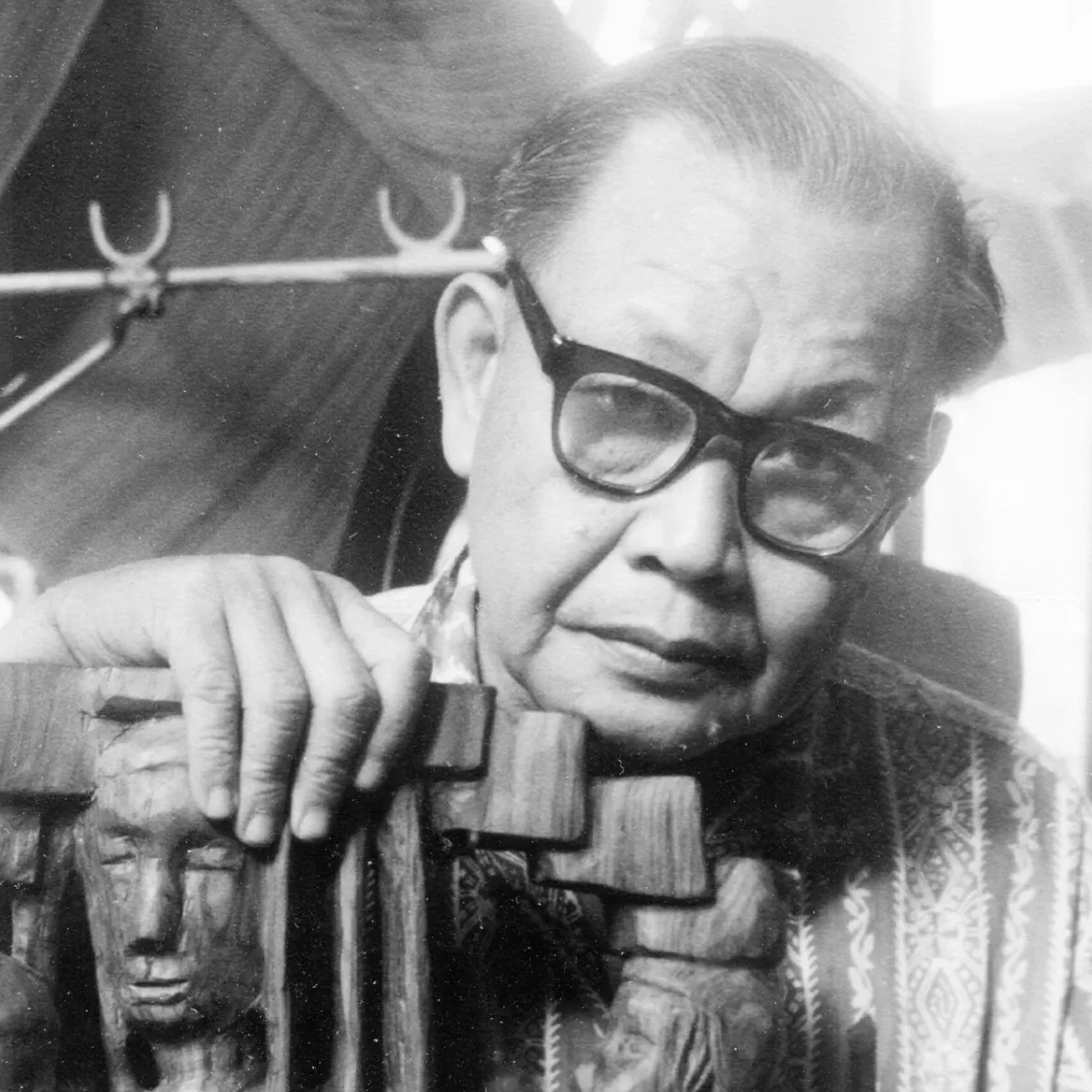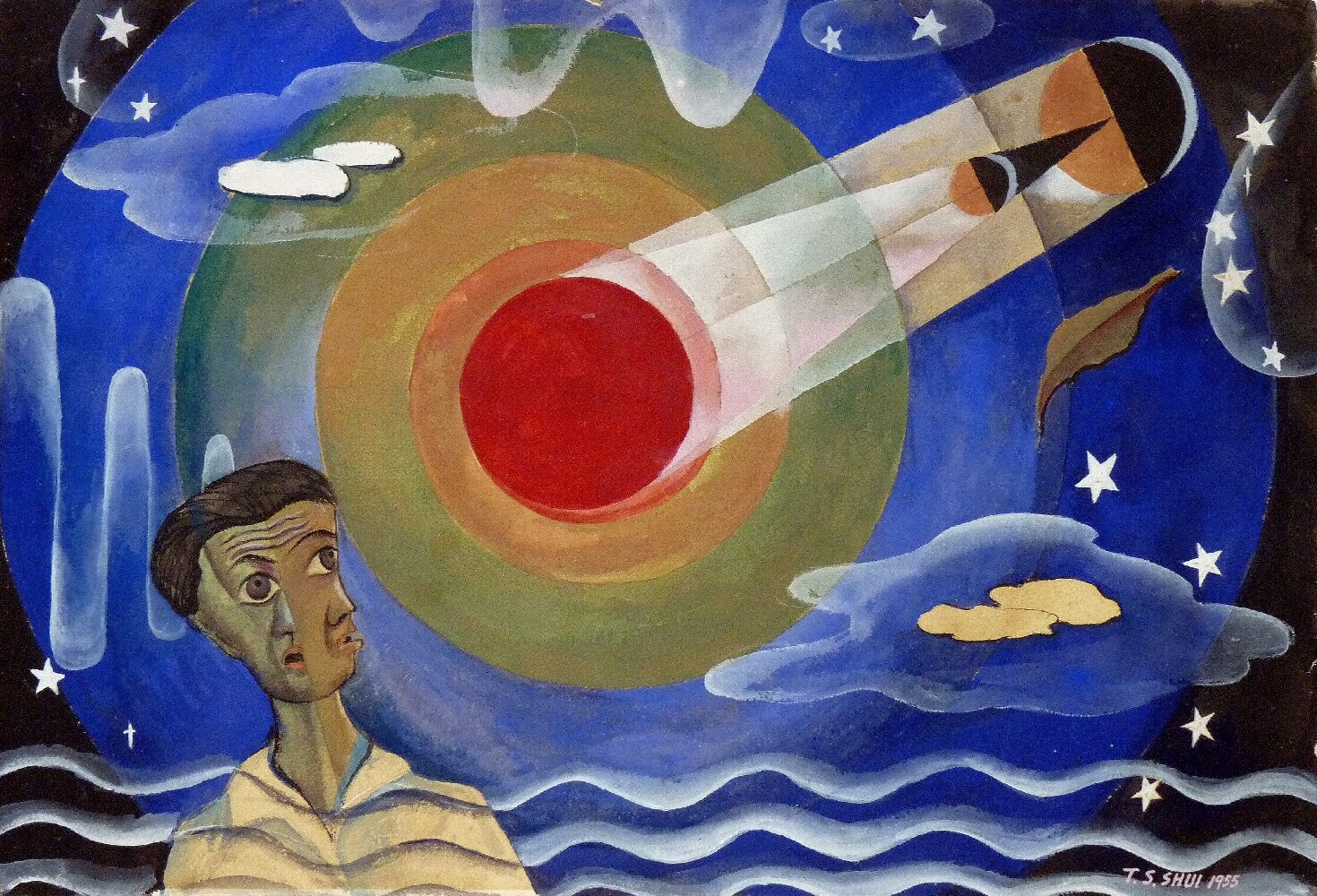Shui Tit Sing

Self Portrait, 1939, Watercolour on paper, 32 x 23.5 cm

Shui Tit Sing
Details:
Shui Tit Sing (1914–1997) was a Chinese-born Singaporean artist and educator whose artistic practice evolved from ink and oil painting to a distinguished body of work in teakwood sculpture. A key figure in post-war Singapore art, he studied under Lin Fengmian and taught for decades while actively contributing to the local art scene.
Education:
1937 Hangzhou National College of Art (Painting Department), Hangzhou, China
1940 National College of Art (Western Painting Department), Hangzhou, China
Shui Tit Sing (1914–1997) was a Chinese-born Singaporean artist and educator whose artistic practice evolved from ink and oil painting to a distinguished body of work in teakwood sculpture. Celebrated for his sensitive depictions of ordinary life, Shui’s oeuvre blends traditional Eastern aesthetics with a grounded humanism that reflected his lifelong commitment to bridging art and lived experience.
Shui was born in China in 1914 and received his secondary education at Pui Ying Secondary School in Guangzhou, where he was introduced to the visual arts under the mentorship of renowned photographer Hou Tieh Hua. In 1934, he enrolled in the Hangzhou National College of Art—then under the directorship of Lin Fengmian—where he studied painting. His teachers included several of China’s modern art pioneers, among them Lin Fengmian, Pan Tianshou, Wu Dayu, Cai Weilian, Chang Shuhong, and Guan Liang. Lin once praised Shui as a student with “an iron will.” During his years in Hangzhou, Shui formed enduring friendships with fellow students including Zao Wou-Ki, Zhuang Huayue, Gao Guanhua, and Tay Tian Song, with whom he lived, created, and exchanged ideas. He graduated from the Department of Painting in 1937 and furthered his studies in Western painting, completing his training in 1940.
In late 1940, Shui emigrated to Malaya upon the invitation of his former classmates Tay Tian Song and Zheng Guanghan. From 1941 to 1945, he taught at Chung Hua High School, Kuala Pilah, Malaya, contributing quietly to art education during the turbulent years of World War II. In 1947, Shui moved to Singapore and began a long teaching career, most notably at Catholic High School from 1948 to 1977, as well as at Ai Tong School and other local institutions. In 1957, he became a Singaporean citizen.
Alongside teaching, Shui maintained an active studio practice and exhibited widely in national exhibitions. He was a long-standing member of the Society of Chinese Artists and participated in group exhibitions across Singapore. During the 1960s and 1970s, he joined the Ten Men Art Group on study tours across Southeast Asia, where he painted, photographed, and later sculpted from observation, deepening his commitment to portraying the daily lives of local communities.
A pivotal shift in Shui’s career occurred in 1968 when he turned exclusively to sculpture. Working primarily in teak, his carvings portrayed fishermen, farmers, labourers, and women at work—subjects rendered with humility, clarity, and a deep reverence for human dignity. He once stated that his sculptures must be “oriental in spirit and grounded in reality.” Fellow artist and sculptor Cheong Soo Pieng suggested that Shui embrace a darker patina in his wood surfaces to evoke a sense of age and depth—a technique Shui adopted and made his own, developing a distinctive, timeworn visual language.
That same year, under the recommendation of Cheng Tien-Sung, then president of the Society of Chinese Artists, Shui was appointed to the society’s executive committee, working alongside artists such as Chen Wen Hsi, Chen Jen Hao, Lim Yew Kuan, and Lim Tze Peng. His contributions were instrumental to the society’s development during a critical period in its history.
Though widely respected as an educator and sculptor in Singapore, Shui remained deeply influenced by his early artistic foundations. He carried with him the ethos of his teacher Lin Fengmian—“to fight for art”—throughout his life. In his later years, Shui travelled extensively, taking thousands of photographs and translating his impressions of international life into wood sculptures. His work, while rooted in Chinese modernism, increasingly reflected a global awareness.
Shui Tit Sing passed away in Singapore in 1997. His legacy lives on through his many students, his contributions to Singapore’s early art institutions, and a body of work that stands as a quiet yet enduring testimony to a life devoted to art and education.
Solar Eclipse
1955
Watercolour on paper
38.5 x 56.5 cm

Elephant Carriages
1955
Woodcut print
15.3 x 20.7 cm
-1955-Woodcut-print-15.3-X-20.7-cm.jpg)


